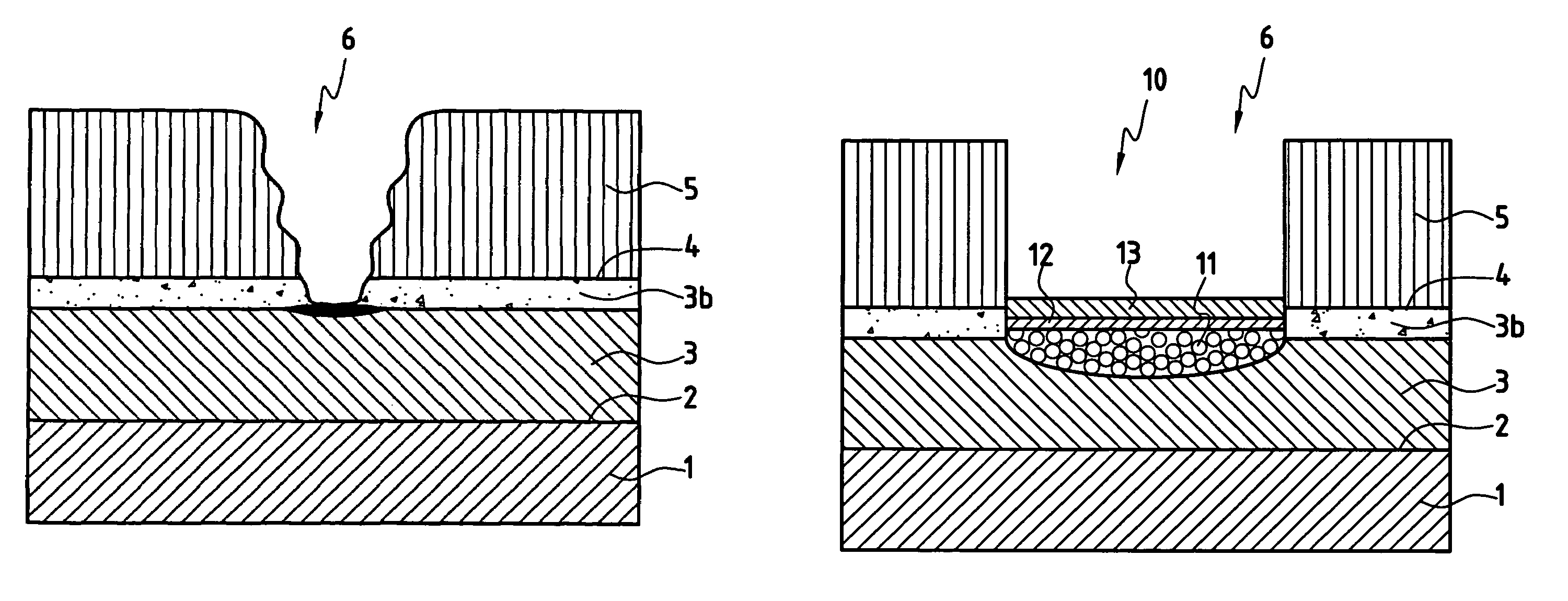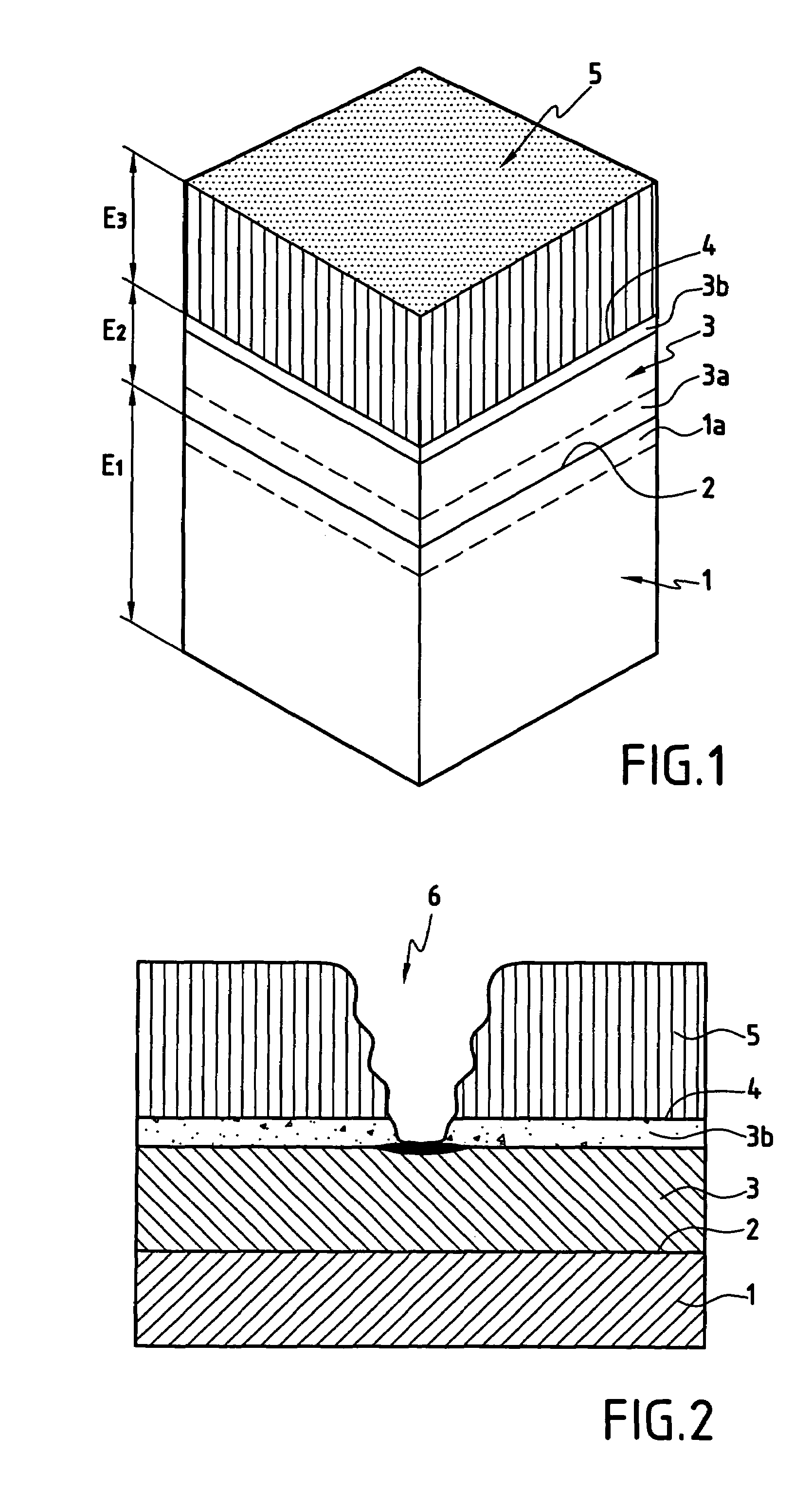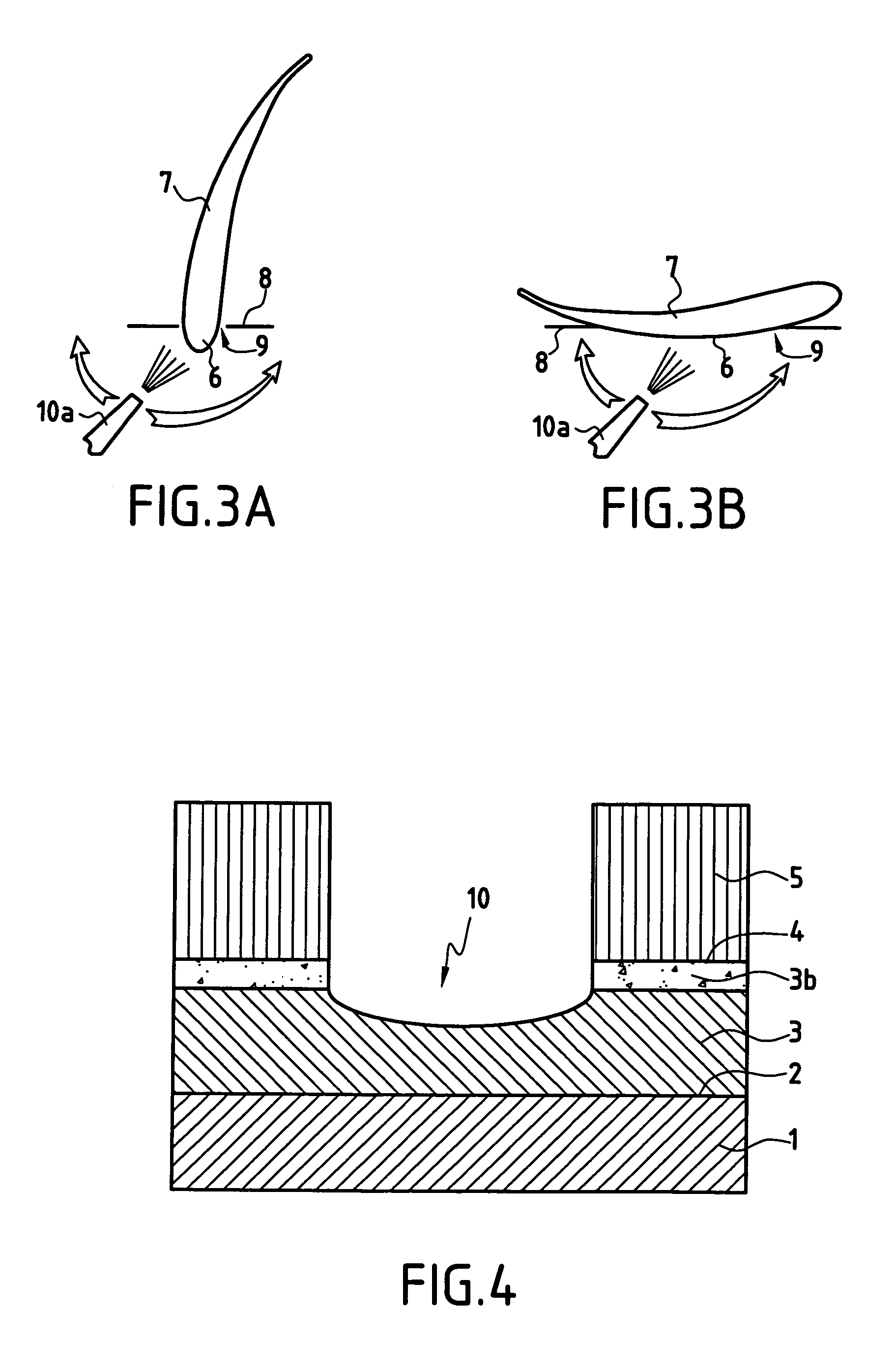Method of locally repairing parts covered with a thermal barrier
a technology of thermal barrier and local repair, which is applied in the direction of liquid/fluent solid measurement, peptides, machines/engines, etc., can solve the problems of insufficient development of superalloys to keep up with the increasing requirements for the lifetime of parts, the inability to be subjected to microdeformation, and the inability to ductile poorly
- Summary
- Abstract
- Description
- Claims
- Application Information
AI Technical Summary
Benefits of technology
Problems solved by technology
Method used
Image
Examples
Embodiment Construction
[0053]FIG. 1 shows a portion of a part 1 in good condition made of a nickel-based superalloy of thickness E1, coated on its outside face 2 in a metal underlayer 3 of an alumina-forming metal alloy, with its outside face 4 itself being coated in an outer layer 5 of columnar ceramic having a thickness E3.
[0054]By way of example, the part 1 is an element of a high pressure turbine stator in a turbojet comprising a plurality of stationary vanes, or it is a moving blade for this type of turbine.
[0055]The role of the metal underlayer 3 is to protect the part 1 against oxidation and against corrosion of the kind that can be caused by the hot and aggressive gases flowing through the turbine. Its role is also to provide bonding for the ceramic outer layer 5.
[0056]The underlayer is made by depositing aluminide or an MCrAlY alloy in which M is preferably nickel or cobalt, using thermochemical methods of pack or vapor cementation. The underlayer may also include platinum. By means of heat treat...
PUM
| Property | Measurement | Unit |
|---|---|---|
| temperature | aaaaa | aaaaa |
| temperature | aaaaa | aaaaa |
| thickness E3 | aaaaa | aaaaa |
Abstract
Description
Claims
Application Information
 Login to View More
Login to View More - R&D
- Intellectual Property
- Life Sciences
- Materials
- Tech Scout
- Unparalleled Data Quality
- Higher Quality Content
- 60% Fewer Hallucinations
Browse by: Latest US Patents, China's latest patents, Technical Efficacy Thesaurus, Application Domain, Technology Topic, Popular Technical Reports.
© 2025 PatSnap. All rights reserved.Legal|Privacy policy|Modern Slavery Act Transparency Statement|Sitemap|About US| Contact US: help@patsnap.com



